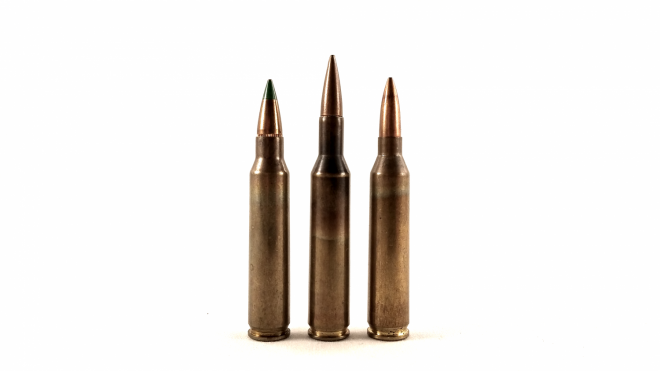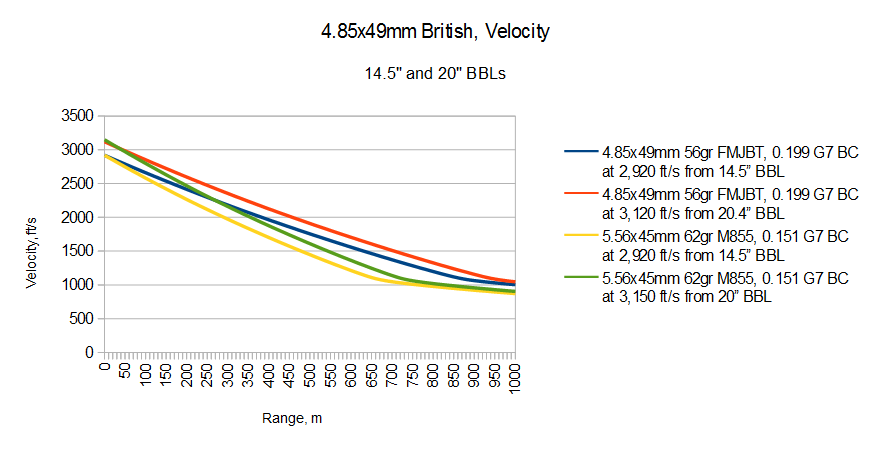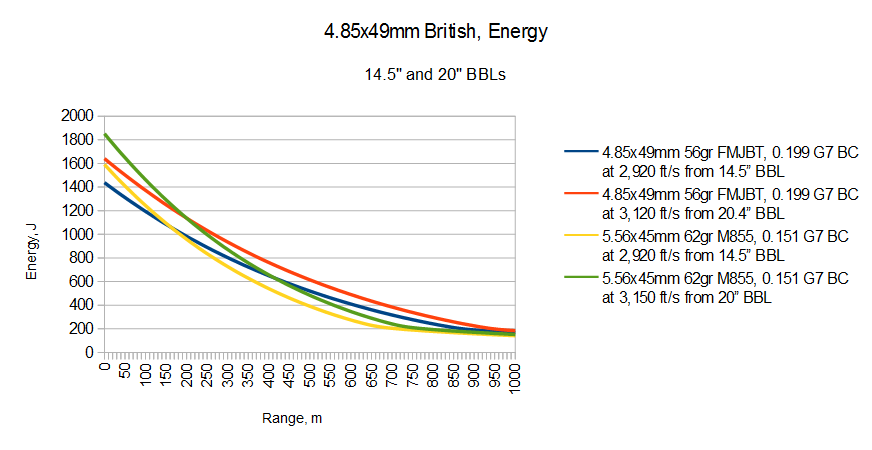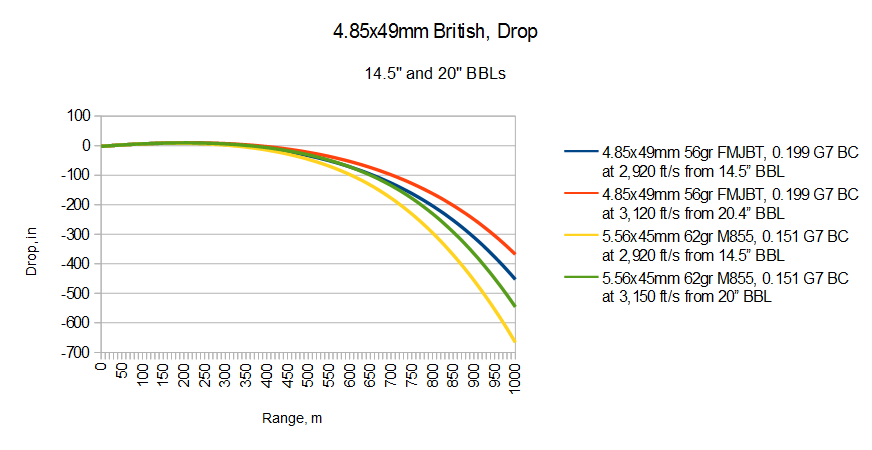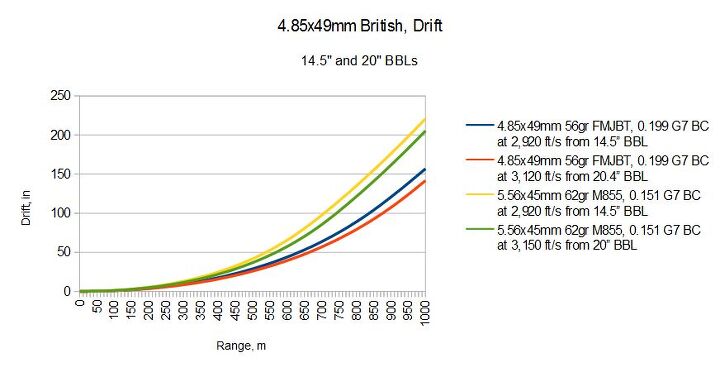On Saturday we looked at one British “contender” which could have in some alternate reality become the NATO standard round, and today we’re going to look at another: The 4.85x49mm. After the United States adopted the .223 Remington round as the 5.56x45mm in the mid-1960s, a race began among NATO member nations to create and adopt something similar. Lest the Organization lose the benefits of standardization if a member nation pre-emptively adopted a new SCHV round, these efforts force NATO to begin a competition for a second NATO-standard infantry round. Entrants from the USA, France, Belgium, Germany, and the UK competed head-to-head, and while it was the Belgian 5.56mm SS109 that emerged victorious, the 4.85x49mm round submitted by the UK was ballistically impressive enough to warrant a second look.

Rounds of the second NATO trials, left to right: the US 55gr M193 which was used as a test round, 54gr XM777 (US), 62gr SS109 (Belgium), 55gr F1 (France), 56gr 4.85x49mm, 52gr 4.7×32 caseless (Germany), and a pre-production XM855 round, as the chosen SS109 was designated in the United States.
Like those in the article on .17 caliber rounds, these charts also include 5.56mm NATO as a reference, but there’s a slight weirdness to the comparison. The XL64E4 rifle that was trialed by NATO sported a 20.4″/518.5mm long barrel, which is just slightly longer than the 20″ barrel we’ve been using for comparisons. However, the velocity loss from 20.4″ to 20″ is too minimal to be visible on graphs like this, and these figures better represent the XL64E4’s ballistics, so I am preserving them here. Also, I want to note that sources differ on the actual muzzle velocity of the XL64E4. The Last Enfield by Steve Raw and R. Blake Stevens gives a muzzle velocity of 900 m/s or 2,953 ft/s for the rifle, while Assault Rifle by Anthony G. Williams and Maxim Popenker lists a muzzle velocity of 950 m/s, or 3,120 ft/s. I am not sure which figure is right, but cursory internal ballistics calculations using a Powley computer suggests that Williams’ figure is correct (and also that the Raw and Stevens figure is probably an instrumental velocity, not a true muzzle velocity). However, in the event that the Stevens and Raw figure is the true one, the line for 14.5″ barrels on the graphs below is very close to what that would be. I should also note that the ballistic coefficient for the 56gr lead-cored FMJ is estimated, and while it should be pretty close, it might be slightly too high.
On to the graphs:
The 4.85 British certainly possessed good ballistics for an SCHV round, but it also wasn’t very heavy at 11.6 grams, weighing no more than the substantially inferior 5.56mm M193 round.
Note: All ballistic calculations are done with JBM’s Trajectory calculator, using the ballistic coefficient appropriate to the projectile being modeled, and assuming an AR-15 as a firing platform. Also, keep in mind that there is no single true velocity for a given round; velocity can vary due to a large number of factors, including ambient temperature and chamber dimensions. Instead, I try to use nominal velocity figures that are representative of the capability of the round in question.
Postscript: Since I’ve decided to expand this series to calibers that – while they may still be ballistically relevant to the wider conversation about intermediate calibers – are no longer actually being produced or tested, I have decided to re-name some of the posts in this series to “Historical Intermediate Calibers”. However, I will retain the same numerical sequence and the word “Modern” struck through. Enjoy!
 Your Privacy Choices
Your Privacy Choices
